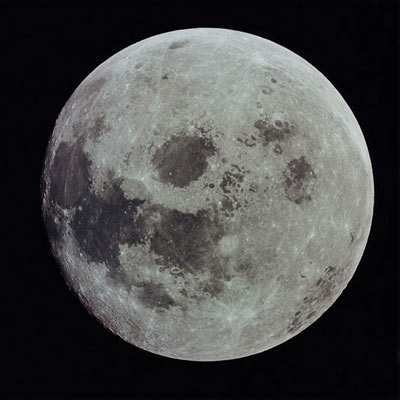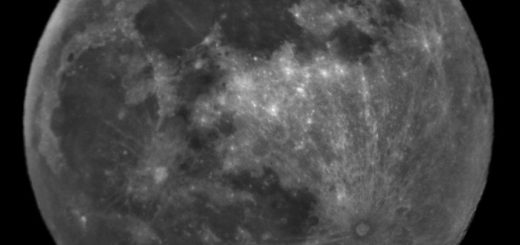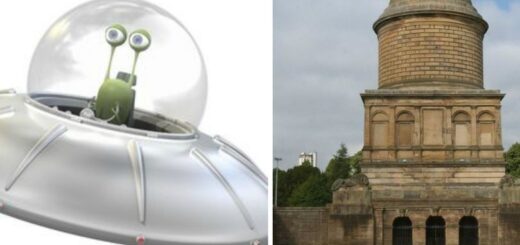How the Moon Works

From anyplace on Earth, the clearest thing in the night sky is usually the moon, Earth’s only natural satellite and the nearest celestial object (240,250 miles or 384,400 km away). Ancient cultures revered the moon. It represented gods and goddesses in various mythologies — the ancient Greeks called it “Artemis” and “Selene,” while the Romans referred to it as “Luna.”
When early astronomers looked at the moon, they saw dark spots that they believed were seas (maria) and lighter regions that they believed was land (terrae). Aristotle’s view, which was the accepted theory at the time, was that the moon was a perfect sphere and that the Earth was the center of the universe. When Galileo looked at the moon with a telescope, he saw a different image — a rugged terrain of mountains and craters. He saw how its appearance changed during the month and how the mountains cast shadows that allowed him to calculate their height. Galileo concluded that the moon was much like Earth in that it had mountains, valleys and plains. His observations ultimately contributed to the rejection of Aristotle’s ideas and the Earth-centered universe model.
Because the moon is so close to the Earth relative to other celestial objects, it’s the only one to which humans have traveled and set foot upon. In the 1960s, the United States and Russia were involved in a massive “space race” to land men on the moon. Both countries sent unmanned probes to orbit the moon, photograph it and land on the surface. In July 1969, American astronauts Neil Armstrong and Edwin “Buzz” Aldrin became the first humans to walk on the moon. During six lunar landing missions from 1969 to 1972, a total of 12 American astronauts explored the lunar surface. They made observations, took photographs, set up scientific instruments and brought back 842 pounds (382 kilograms) of moon rocks and dust samples. What did we learn about the moon from these historic journeys?
Let’s take a closer look at the moon. We’ll examine its surface features and learn about its geology, internal structure, phases, formation and influence on the Earth
As we mentioned, the first thing that you’ll notice when you look at the moon’s surface are the dark and light areas. The dark areas are called maria. There are several prominent maria.
Mare Tranquilitatis (Sea of Tranquility): where the first astronauts landed
Mare Imbrium (Sea of Showers): the largest mare (700 miles or 1100 kilometers in diameter)
Mare Serenitatis (Sea of Serenity)
Mare Nubium (Sea of Clouds)
Mare Nectaris (Sea of Nectar)
Oceanus Procellarum (Ocean of Storms)
The maria cover only 15 percent of the lunar surface.
The remainder of the lunar surface consists of the bright highlands, or terrae. Highlands are rough, mountainous, heavily cratered regions. The Apollo astronauts observed that the highlands are generally about 4 to 5 km (2.5 to 3 miles) above the average lunar surface elevation, while the maria are low-lying plains about 2 to 3 km (1.2 to 1.8 miles) below average elevation. These results were confirmed in the 1990s, when the orbiting Clementine probe extensively mapped the lunar surface.
The moon is littered with craters, which are formed when meteors hit its surface. They may have central peaks and terraced walls, and material from the impact (ejecta) can be thrown from the crater, forming rays that emanate from it. Craters come in many sizes, and you’ll see that the highlands are more densely cratered than the maria.
Another type of impact structure is a multi-ringed basin. These structures were caused by huge impacts that sent shockwaves outward and pushed up mountain ranges. The Orientale Basin is an example of a multi-ringed basin.
Besides craters, geologists have noticed cinder cone volcanoes, rilles (channel-like depressions, probably from lava), lava tubes and old lava flows, which indicate that the moon was volcanically active at some point.
The moon has no true soil because it has no living matter in it. Instead, the “soil” is called regolith. Astronauts noted that the regolith was a fine powder of rock fragments and volcanic glass particles interspersed with larger rocks.
Upon examining the rocks brought back from the lunar surface, geologists found the following characteristics:
The maria consisted primarily of basalt, an igneous rock derived from cooled lava.
The highland regions include mostly igneous rocks called anorthosite and breccia
If you compare the relative ages of the rocks, the highland areas are much older than the maria. (4 to 4.3 billion years old versus 3.1 to 3.8 billion years old).
The lunar rocks have very little water and volatile compounds in them (as if they’ve been baked) and resemble those found in the Earth’s mantle.
The oxygen isotopes in moon rocks and the Earth are similar, which indicates that the moon and the Earth formed at about the same distance from the sun.
The density of the moon (3.3 g/cm3) is less than that of the Earth (5.5 g/cm3), which indicates that it doesn’t have a substantial iron core.
Astronauts placed other scientific packages on the moon to collect data:
Seismometers didn’t detect any moonquakes or other indications of plate tectonic activity (movements in the moon’s crust)
Magnetometers in orbiting spacecraft and probes didn’t detect a significant magnetic field around the moon, which indicates that the moon doesn’t have a substantial iron core or molten iron core like the Earth does.
Let’s look at what all of this information tells us about the formation of the moon.



 Creators of mankind
Creators of mankind Description of “Tall white aliens”
Description of “Tall white aliens” Where they came from?
Where they came from? About hostile civilizations
About hostile civilizations The war for the Earth
The war for the Earth “Tall white aliens” about eternal life
“Tall white aliens” about eternal life Video: “Nordic aliens”
Video: “Nordic aliens” Aliens
Aliens Alien encounters
Alien encounters The aliens base
The aliens base UFO
UFO Technology UFO
Technology UFO Underground civilization
Underground civilization Ancient alien artifacts
Ancient alien artifacts Military and UFO
Military and UFO Mysteries and hypotheses
Mysteries and hypotheses Scientific facts
Scientific facts


















